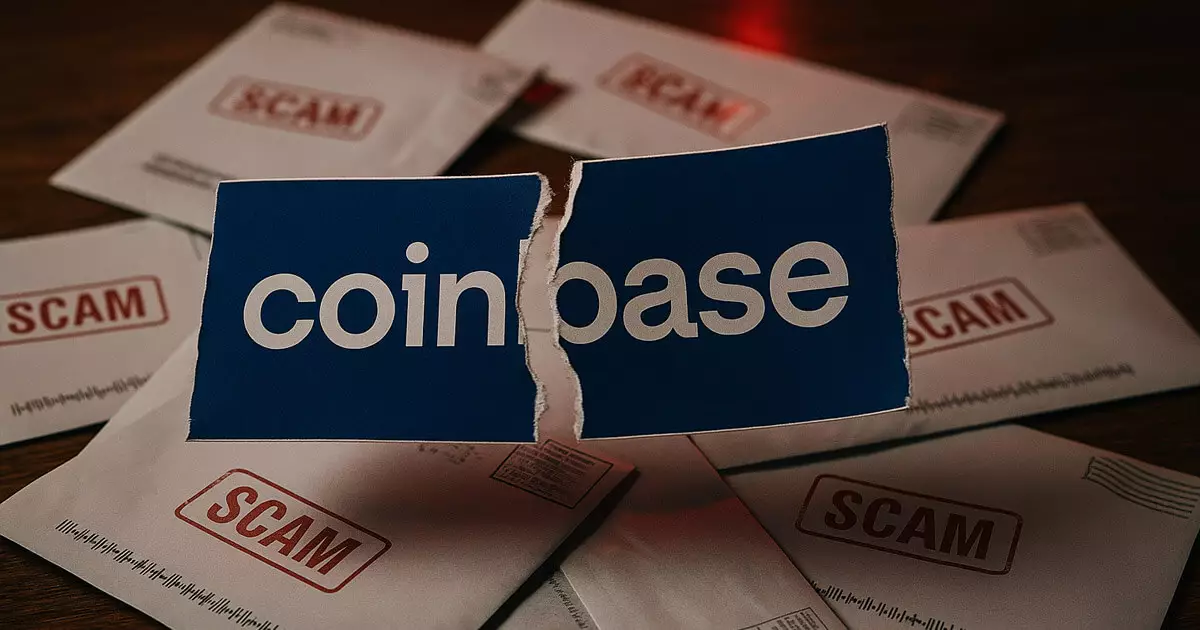Coinbase has found itself in the eye of a storm following a significant data breach that has left countless users exposed and vulnerable. What is most disturbing is the aftermath of this breach, where victims are receiving fraudulent letters in their mailboxes, using their stolen personal information to propel a credit protection scam. The implications of such exploitation are dire, particularly for those who may not grasp the severity of identity theft in our increasingly digital age. Those affected are no longer merely statistics; they represent real individuals whose lives are now thrown into turmoil.
The New Wave of Phishing: Physical Letters
Traditionally, phishing scams have manifested through emails, social media, or other digital avenues. However, this brazen shift to physical mail adds a new layer of complexity to security threats. Mike Dudas, the founder of The Block, highlighted the unsettling reality when he himself received a fake letter purportedly from IDX, a legitimate identity protection service previously associated with Coinbase. Instead of merely tricking users into providing more information online, these scams are now invading private spaces, tangibly breaching what many assume to be their sanctuary—their homes.
The personal nature of a letter signifying deceit strikes differently. Letters appear to have an air of legitimacy and urgency; they are no longer just feelers sent into the cyberspace ether—they are tangible reminders of vulnerability. It’s a harrowing reality that makes one question the overall integrity and security that a company like Coinbase can provide.
The Underbelly of Cybercriminal Networks
The source of this information leak points back to compromised customer support contractors, a troubling phenomenon that reveals the lengths to which organizations must go to ensure their employees’ integrity. The targeted nature of these breaches not only underscores the sophistication of modern cybercriminals but also highlights a critical gap in operational security within companies dealing with sensitive data. The repercussions aren’t confined to the digital realm but extend into peoples’ everyday lives, resulting in an unsettling concatenation of risks: identity fraud, social engineering tactics, and physical impersonations.
Also concerning is how this breach transcends the mere exposure of data; it drags innocent users deeper into peril through new schemes leveraging their compromised information. The space between attacker and victim continues to diminish, suggesting that some cybercriminals are honing their methods and strategies to become even more audacious.
The Collective Responsibility of Companies and Consumers
Coinbase’s response to this breach, including promises of increased security measures and credit monitoring offers, feels inadequate in the face of the real-world implications. While the company can undertake security enhancements and even offer rewards for tracking down those responsible, the damage done may linger far longer than any compensatory effort. The call for vigilance shouldn’t just rest with individuals; technology firms must take proactive steps to safeguard the data they collect. Users need to be proactive too—intensifying their awareness about their personal information and recognizing the signs of counterfeit offers.
At this point, the fallout from the breach is emblematic of a larger trend within the crypto world where trust is becoming increasingly fragile. It emphasizes the need for a symbiotic relationship between users and platforms when safeguarding sensitive information in an era where digital currency is becoming more commonplace.

